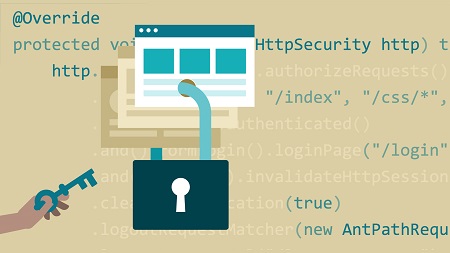
English | MP4 | AVC 1280×720 | AAC 48KHz 2ch | 2h 20m | 329 MB
Developers sometimes struggle to see their apps as attackers do. They don’t automatically recognize the vulnerabilities. That is where frameworks like Spring Security come in. Spring Security offers built-in authentication and authorization features for securing your apps and services, and easy ways to extend the framework to maximize its value. Join security architect Frank Moley, as he shows how to secure your Java projects with Spring Security, LDAP, Active Directory, and WebFlux. Plus, learn how to use Spring Security to set up your own OAuth servers to secure your apps and services.
Topics include:
- Authentication vs. authorization
- Implementing in-memory and JDBC authentication
- Form-based authentication
- Building login and logout pages
- Configuring LDAP authentication
- Leveraging OAuth 2
- WebFlux basic security
Table of Contents
Introduction
1 Welcome
2 What you need to know
3 Working with exercise files
Spring Security Concepts
4 Introduction to Spring Security
5 Authentication vs. authorization
6 Spring Security projects
Securing Web Applications with Spring
7 Implementing basic authentication
8 In-memory authentication
9 JDBC authentication
10 Leveraging bcrypt for hashing
11 Authorization
12 Form-based authentication
13 The login page
14 The logout page
15 Putting it all together
LDAP Authentication
16 LDAP for authentication
17 Configuring a sample LDAP server
18 Implementing LDAP for authentication
19 Spring LDAP outside of authentication
20 AD vs. LDAP for authentication
Leveraging OAuth 2 with Spring Security
21 OAuth 2
22 Spring and OAuth 2
23 Creating an OAuth authorization service
24 Creating an OAuth resource service
25 Client-side implementations of OAuth 2
26 OAuth 2 with third parties
WebFlux Security
27 Introduction to WebFlux security
28 WebFlux basic security
Conclusion
29 Next steps
Resolve the captcha to access the links!